The USS Harry S. Truman and HMS Prince of Wales are currently operating side by side in the waters of the North Sea as part of Neptune Strike 2024, a NATO vigilance activity.
The collaboration highlights the continued commitment of the United States and the United Kingdom to working together with NATO Allies to enhance combined force interoperability.
As part of the USS Harry S. Truman Carrier Strike Group (HSTCSG), the American aircraft carrier is on a scheduled deployment in the U.S. 6th Fleet area of operations. This mission supports U.S. Naval Forces Europe-Africa to defend the interests of the U.S., its Allies, and partners across the region. In the North Sea, the Harry S. Truman is integrating with NATO command and control structures, demonstrating joint maritime strength.
British, American, and Italian aircraft carriers, along with American and Turkish assault ships plus a range of warships and support vessels, are taking part in Exercise NEPTUNE STRIKE 2024-2 to enhance NATO’s ability to defend strategic maritime chokepoints and deter potential threats.
The exercise, running from 24th to 31st October, features the Royal Navy’s HMS Prince of Wales, the U.S. Navy’s USS Harry S. Truman, the amphibious assault ship USS Wasp, Turkey’s TCG Anadolu, and Italy’s ITS Cavour, operating across the Mediterranean, North, and Baltic Seas.
#NATO Neptune Strike’s 2nd exercise in 2024 starts today, training Air-Sea integration in the Mediterranean & Adriatic Sea up to the North & Baltic Sea🇪🇪🇱🇹🇱🇻
With the 🇺🇸 USS Harry S Truman & 🇬🇧 HMS Prince Of Wales in the North. While 🇮🇹 ITS Cavour & 🇺🇸🇹🇷 Navy sails in the south pic.twitter.com/k2njmilwWd
— NATO Air Command (@NATO_AIRCOM) October 24, 2024
The exercise, led by NATO’s Naval Striking and Support Forces (STRIKFORNATO), showcases the complex integration of high-end maritime strike capabilities across multiple operational areas, with a focus on ensuring freedom of navigation and defence across strategic maritime chokepoints.
The exercise encompasses joint operational areas from the Mediterranean and Adriatic Seas up to the North and Baltic Seas, featuring air, land, and sea coordination. It includes significant air-to-ground actions in the Baltic Sea region, notably with the involvement of NATO’s newest member, Sweden. Key operations include amphibious landings, counter-mine efforts, explosive ordnance disposal, and defence against drones.
Rear Adm. James Morley, Deputy Commander of STRIKFORNATO, commented, “The goal is to increase NATO’s ability to conduct wide-reaching multi-domain operations, integrating air, land, and sea forces in real-time to maintain freedom of movement and safeguard critical areas of operation.”
In the North Sea, the USS Harry S. Truman Carrier Strike Group is joined by the Royal Navy’s HMS Prince of Wales and her escorts. Meanwhile, in the Mediterranean, the command and control ship USS Mount Whitney leads operations, supported by the USS Wasp, USS Oak Hill, and Turkey’s amphibious assault ship TCG Anadolu. Italy’s ITS Cavour also contributes to portions of the exercise.
A total of 20 surface vessels, submarines, Special Forces, and numerous aircraft are participating in the exercise, with approximately 15,000 personnel involved in various operational roles. NEST 24-2 reinforces NATO’s ability to respond to threats across multiple domains and locations.
This exercise, which is defensive in nature, is part of Project Neptune, launched in 2020 to improve the flexibility and pace of command and control within NATO’s naval strike and amphibious forces. It demonstrates NATO’s capability to integrate multinational strike and maritime groups across long distances, ensuring rapid, coordinated responses in times of crisis.


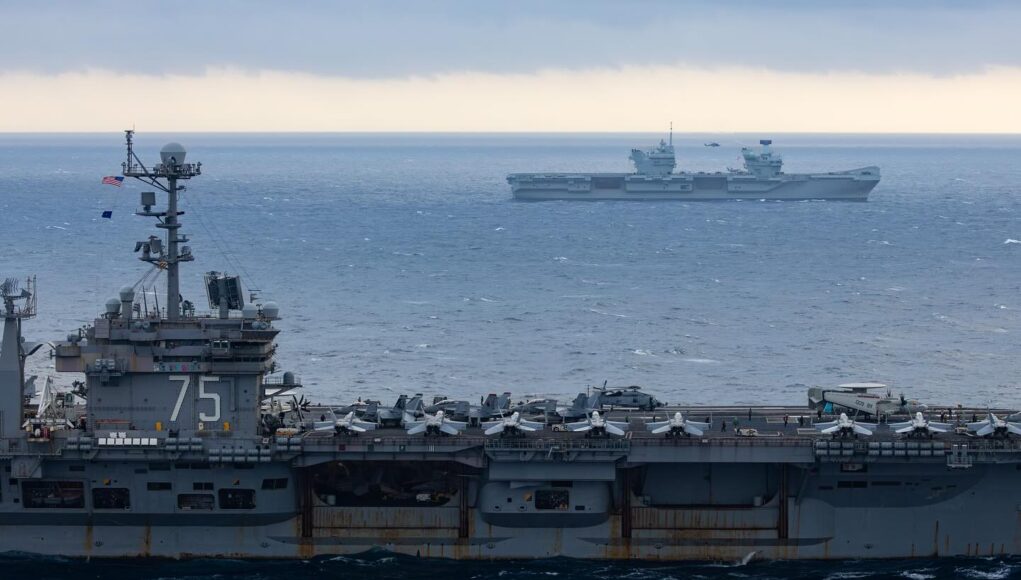
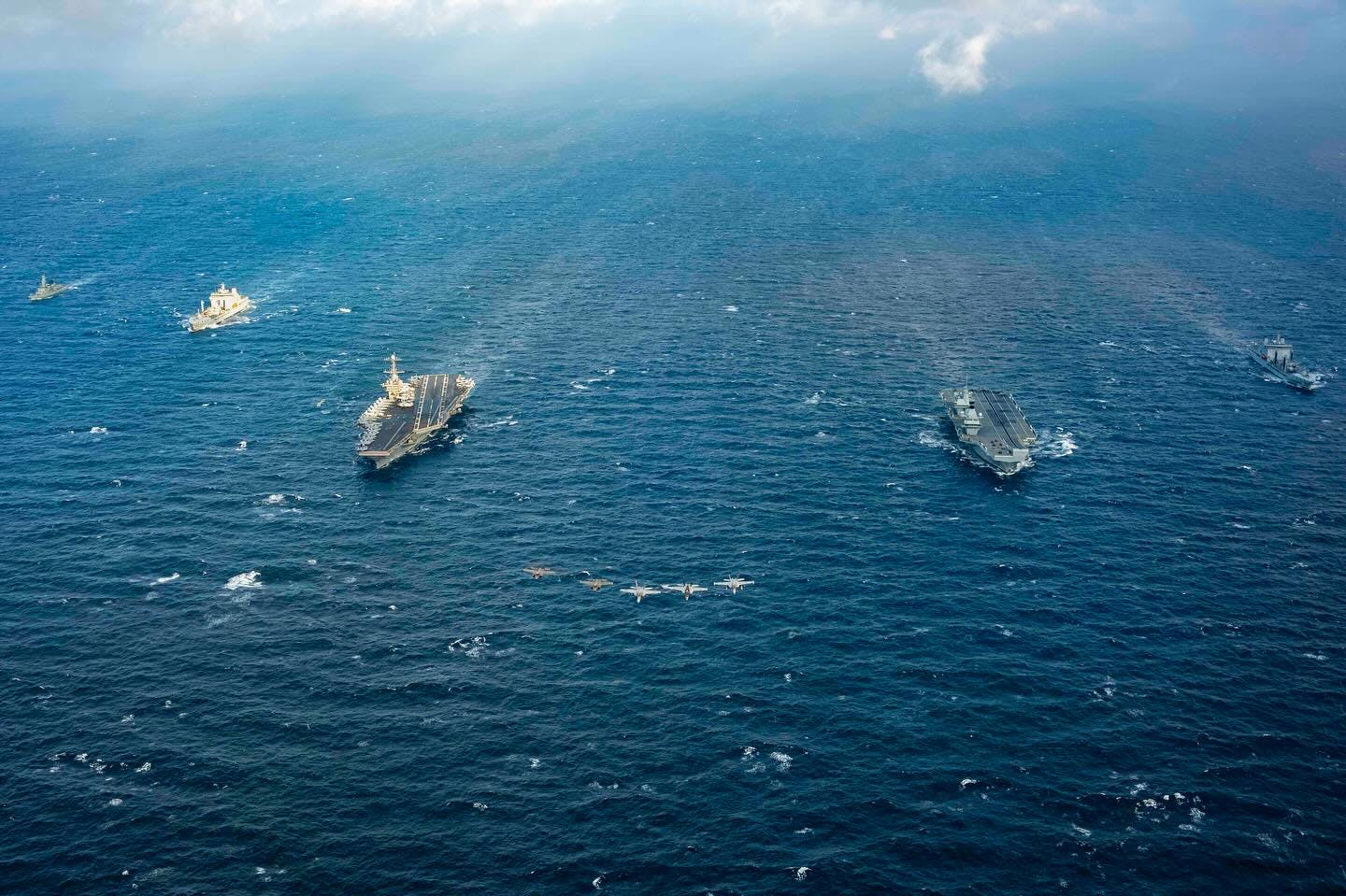
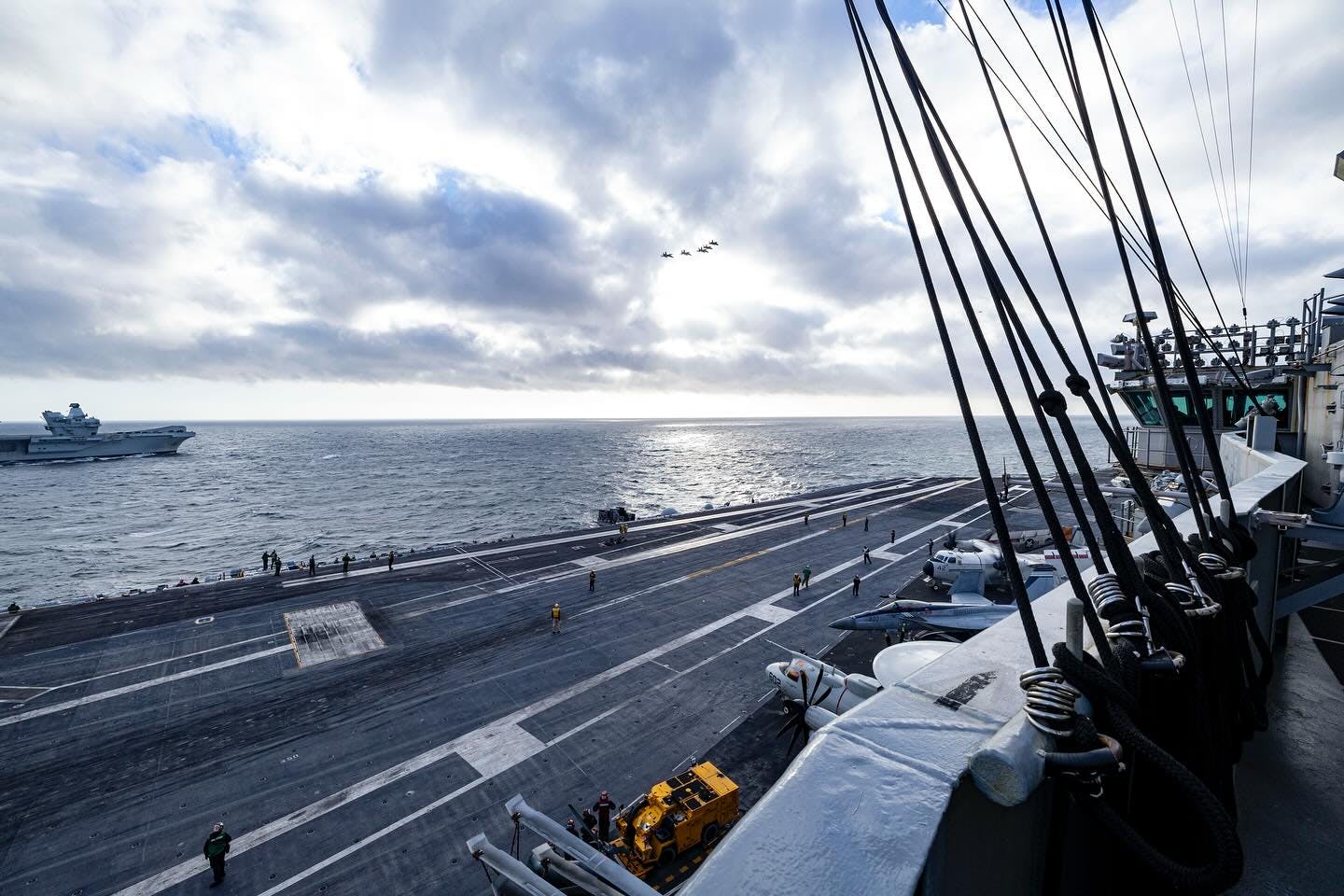
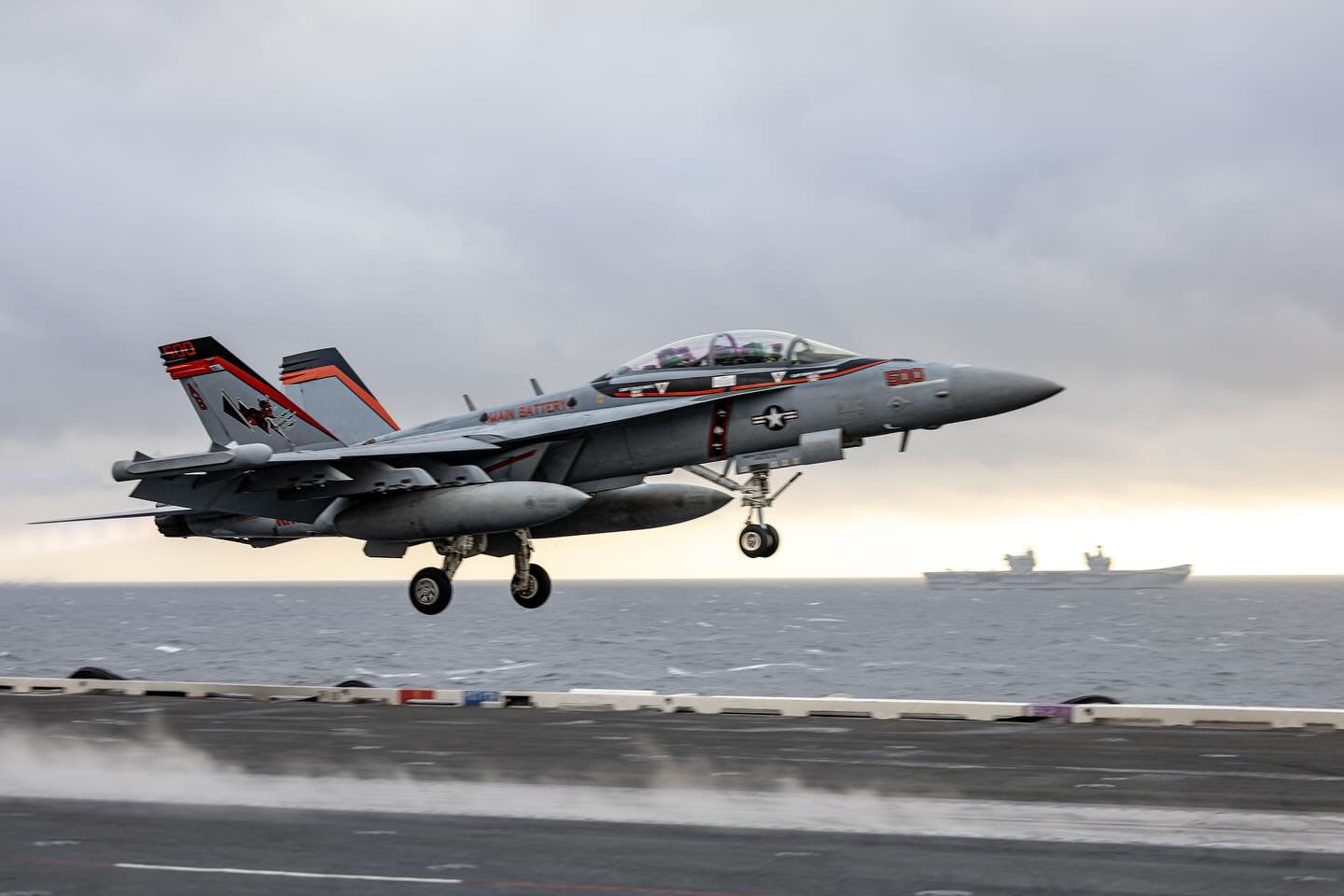

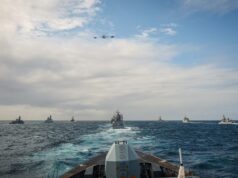

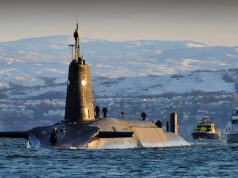

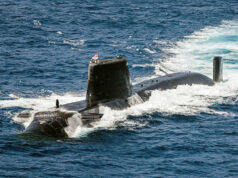

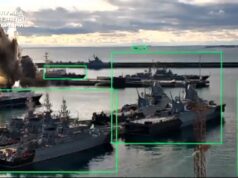
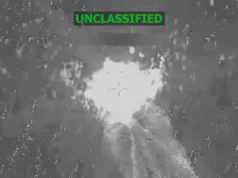
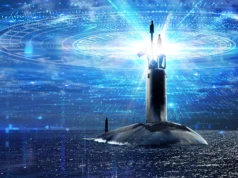

One has the possibility of a big hull extension midlife and one facing the scrappers in that time. The opposite is most likely to happen though, with Truman going on longer and WE sold or scrapped with no mid life extension unless we have a different party from the uniparty leading Britain.
Inkle finkle dinkle doo
A comparison of the aircraft on the flight decks of USS Harry S. Truman and HMS Prince of Wales shows just how far behind the RN still is.
Different philosophy with the navies, we can and prefer to keep all aircraft under cover to protect coatings on the aircraft
In practice the F-35B’s seem to be deck parked on the QEC far more than ideal in order to prove visually that they are “aircraft carriers” and actually have some aircraft embarked. The forward hanger space is thus rarely required for aircraft and appears instead to have become a convenient warehouse and storage area, avoiding the need to manually move stores and spares to/from compartments perhaps several decks down.
The USN argument as I understand it is that they want the planes on the deck so they can be ready to fly in an instant in response to threats. I think that may be a hangover from WWII carriers with limited AEW though.
I wonder if spray-soaked aircraft really are ready to launch at a moments notice.
No, it doesn’t. The only role the US carriers has is carrier strike. Ours have 4 roles and only carry aircraft when they need to. The aircraft in our Tranche 1 order are still being built, whereas US aircraft were built some years ago.
The US carries aircraft on the deck pretty much all the time – we do so only when required.
Besides is it fair and reasonable to compare a superpower and its assets with the UK?
I haven’t lived in the UK for over 30 years, but still consider myself British. However it is so depressing to read and watch the countries negative self flagellation over climate change, industrialisation, racism, colonialism, slavery, immigration, human rights, asylum seekers, museums. Watched from abroad, the Great Britain seems to have become the most gullible and self loathing country in the world. Clearly the UK is not a superpower on par with the USA, China, and perhaps [just] Russia. But the UK still has the 6th highest GDP in the world, surprisingly close to Japan, Germany and India – and well above Russia! The UK desperately needs to start acting again as a permanent member of the UN Security Council, rather than discussing sharing or even giving away its seat to India and/or regional blocks such as Africa. Can anyone imagine France doing that?
It’s actually remarkable how much cleaner a design the QE class is compare to the older American vessels
Don’t we carry aircraft on our Aircraft Carriers anymore…!
When required for the task and the mission….YES.
More PR photo opportunity to pretend we still have a navy..
Looks good
But
And there’s always a but
People on Facebook and X have seen these pics and the usual comments are there
“Embarrassing”
“Look no aircraft”
And so forth
Wouldn’t it be a good idea for the powers that be to do (in military terms) a “Photex” with all the capable aircraft we have and show the deck packed out and show it on the British hating BBC Sky Ch 4 & ITV
I know it would cost a few bob to do but it would be great to shut these idiots up for a change
Despite all the hype over the advantages of V/STOL, CATOBAR remains the preferred option for “super carrier” designs, aka USA, China, Russia, France, India, Turkey … The QEC look set to remain outlier unless [against all expectations] Project Ark Royal is ever fully funded and implemented. The new French aircraft carrier (PA-NG), expected to be ordered in 2025, seems very impressive. It’s a shame that the UK and France can’t synchronise their carrier programmes and thus share some of the massive costs.